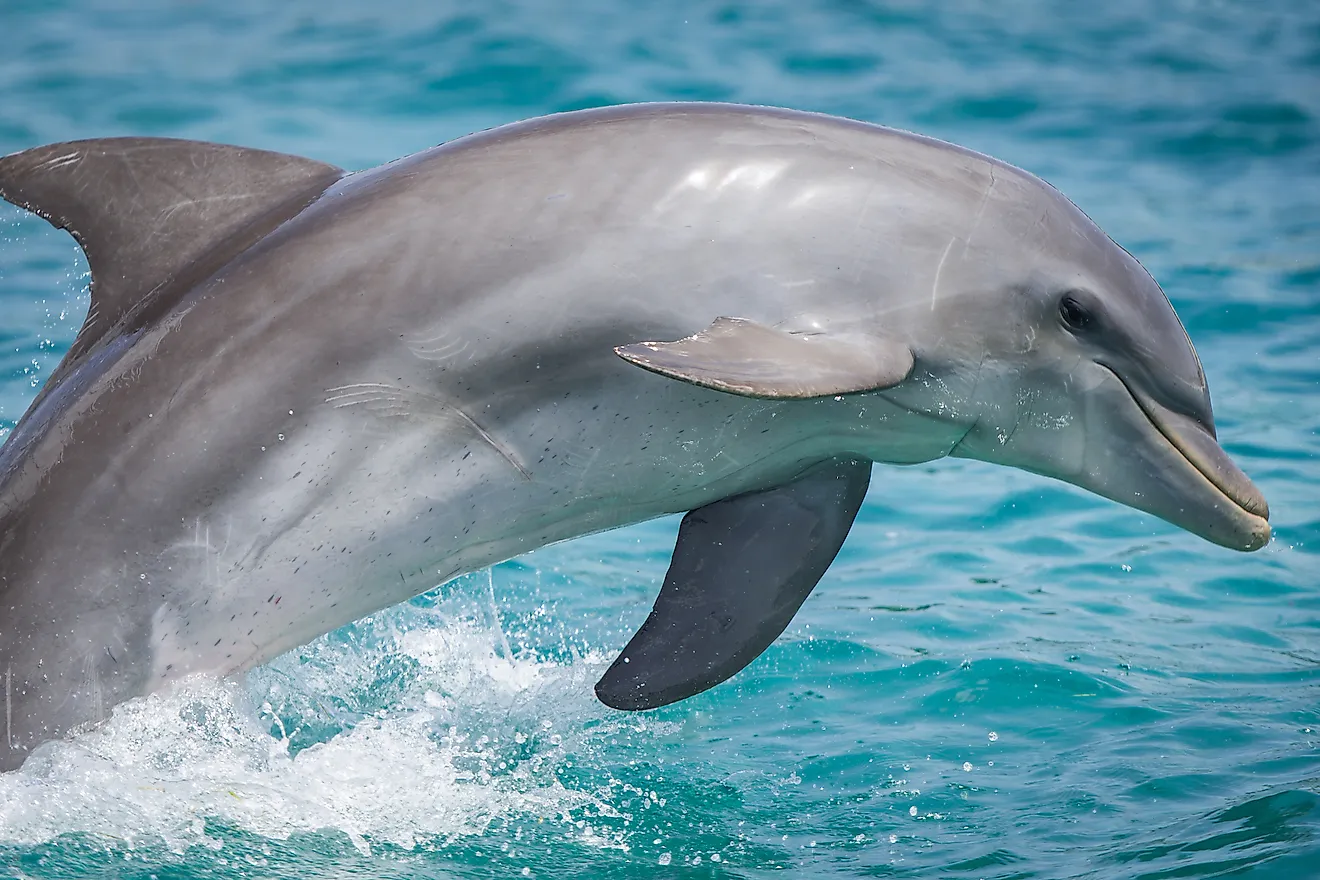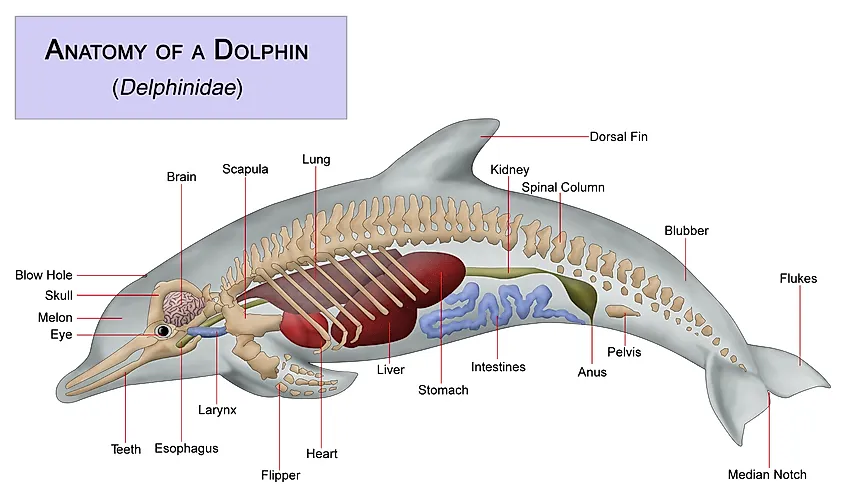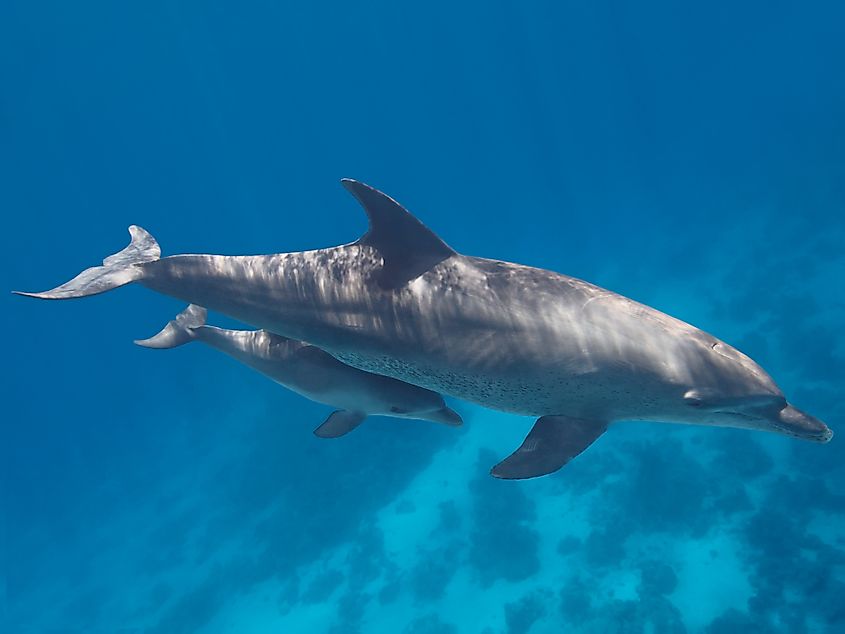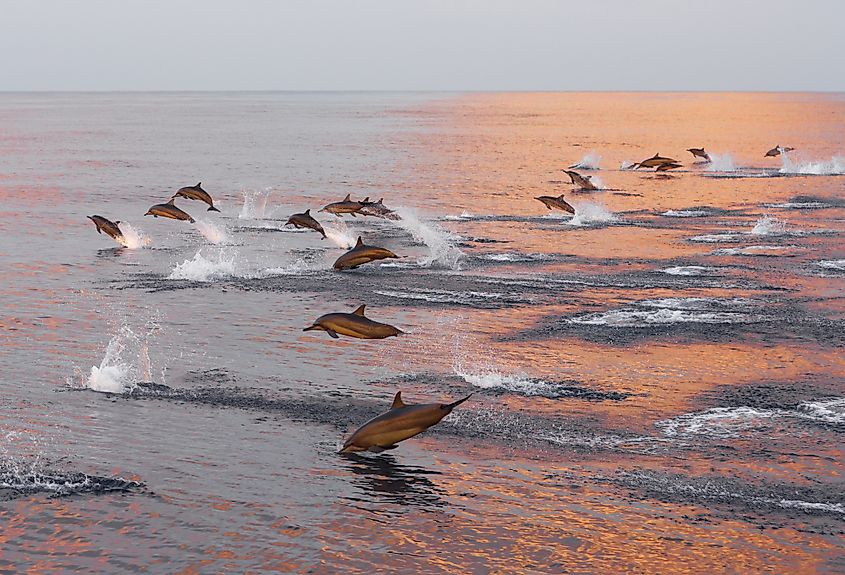Are Dolphins Mammals?

- Yes, dolphins are classified as mammals and not fish
- Dolphins are warm blooded, and have mammary glands.
- Dolphins do not possess gills, and instead must surface to breath air through blowholes on the tops of their heads or back.
Yes, dolphins are mammals and not fish. Despite spending their lives almost completely underwater, and appearing in most ways like fish, they are actually mammals. Dolphins are members of the infraorder Cetacea, which is reserved for marine mammals, such as dolphins, porpoises and whales. While it can be tricky placing certain marine life into either the mammalian or fish categories, there are certain clues which help in classifying dolphins, and other sea life, into their respective groupings.
Why Dolphins Are Wrongly Considered To Be Fish
One of the reasons dolphins are sometimes confused for fish is that sharks are fish, and not mammals. Many people view dolphins in a similar category to sharks, and thus assume they would be classified in the same way. Similarly, many marine animals, including whales, are often thought to be very large fish. Their furless bodies, sleek shape, and fins, are often mental clues that these animals are most similar to fish. However, despite their aquatic nature and lifestyle, dolphins have a number of distinct characteristics that separate them from fish. By examining dolphins’ specific characteristics, it is possible to prove their status as mammals, while simultaneously disqualify them from the fish class.
Why Dolphins Are Not Fish

Dolphins Lack Gills
Dolphins don’t have gills.Unlike other fish, dolphins don’t use gills to breath underwater. Instead, they breath oxygen from the air like land dwelling mammals do. Though dolphins spend their entire lives in water, they frequently return to the surface for oxygen. Despite their marine status, they breath through a lung system in much the same way humans and other mammals do. The main difference between water mammals and land mammals, is that many, like dolphins, breath through blowholes instead of taking air through their mouths. A dolphin will rise to the surface of the water, and expose its blowhole to the open air. It will first exhale, to expel any water on the surface of its hole, and then inhale. The blowhole seals using strong muscles after an inhale to ensure no water gets in to the animals’ lungs when it is underwater.
Tail Of Dolphins Align Horizontally
All fish, including sharks, have tail fins that are aligned vertically. This means that their tails move in a side to side motion, cutting through the water like a rudder. Dolphins, however, do not have this characteristic fish trait, as their tails align horizontally. Like whales and other marine mammals, these horizontal tails move in an up and down motion to propel the animal forward through the water.
Dolphins Have Only One Dorsal Fin
A dolphin has only one dorsal fin. A dorsal fin is a fin on the back, or top of an animal. Marine mammals, such as dolphins and orcas, have one distinct dorsal fin, while fish have two or more. This is a good indicator of which sea creatures are fish, and which are mammals. Though both sharks and dolphins have distinct back fins, sharks and other fish have additional, usually smaller dorsal fins as well.
Why Dolphins Are Mammals

Dolphins Have Mammary Glands
A mammal gets its name from the mammary gland, which every mammal possesses. This gland produces milk for young animals after they or born. Producing milk and nursing young is an act specific to mammals. Because dolphins also lactate, and have mammary glands, they can be considered mammals. Dolphins specifically can produce milk throughout their gestation period. Additionally, baby dolphins are able to nurse underwater by manipulating their tongues into a straw like shape, preventing the milk from escaping from the teat.
Dolphins Possess A Neocortex
All mammals have a neocortex. This is a section of the brain which houses higher level thinking, as well as memory, cognition, perception, language skills and motor commands. Because dolphins have a neocortex, they must categorically be classed as mammals. Dolphins process a particularly complex neocortex, and are known to exhibit self awareness, problem solving and higher level thinking. This is largely why they are thought to be some of the most intelligent creatures on Earth.
Dolphins Are Warm Blooded
Mammals, unlike fish, are warm blooded. Warm blooded animals, known as homeothermic animals, are creatures that have the ability to self regulate their body temperature. This means they do not need to rely on external sources to keep them warm or cool them down. Most marine mammals have a thick layer of blubber under their skin which traps in heat and allows them to remain warm internally even in cool water. In this way, their bodies are able to maintain enough heat for them to function normally, and they are not adversely effected by minor changes to their environment. Cold blooded animals, on the other hand, are greatly effected by their external conditions, and must use their surroundings to help regulate their body temperatures.
Dolphins Give Birth To Live Young Ones
Live births While the question of laying eggs versus having live births is closely associated with the question of whether an animal is a mammal or not, it is important to note this is not a definitive quality. However, despite this, most mammals give birth to live young, while non mammals typically lay eggs. In a dolphins’ case, their birthing habits follow the norm, and, like most mammals, they birth live young. Dolphins will give birth to a single offspring anywhere between once every year, to every five years, but usually produce young roughly once every three years. They have a gestation period of twelve months.

By reviewing the evidence, it is clear that dolphins can be proven to be mammals, as well as systemically disqualified from being fish. Their mammal status is clear due to their having mammary glands, a neocortex, lung breathing systems, and warm blood. Conversely they are not fish as they lack gills, have horizontally aligned tails, and possess only one dorsal fin. By examining these distinct indicators, dolphins, along with other marine animals, can be classed in the same way. It is clear, then, that dolphins are indeed mammals, albeit marine mammals, and not, in fact, fish.











